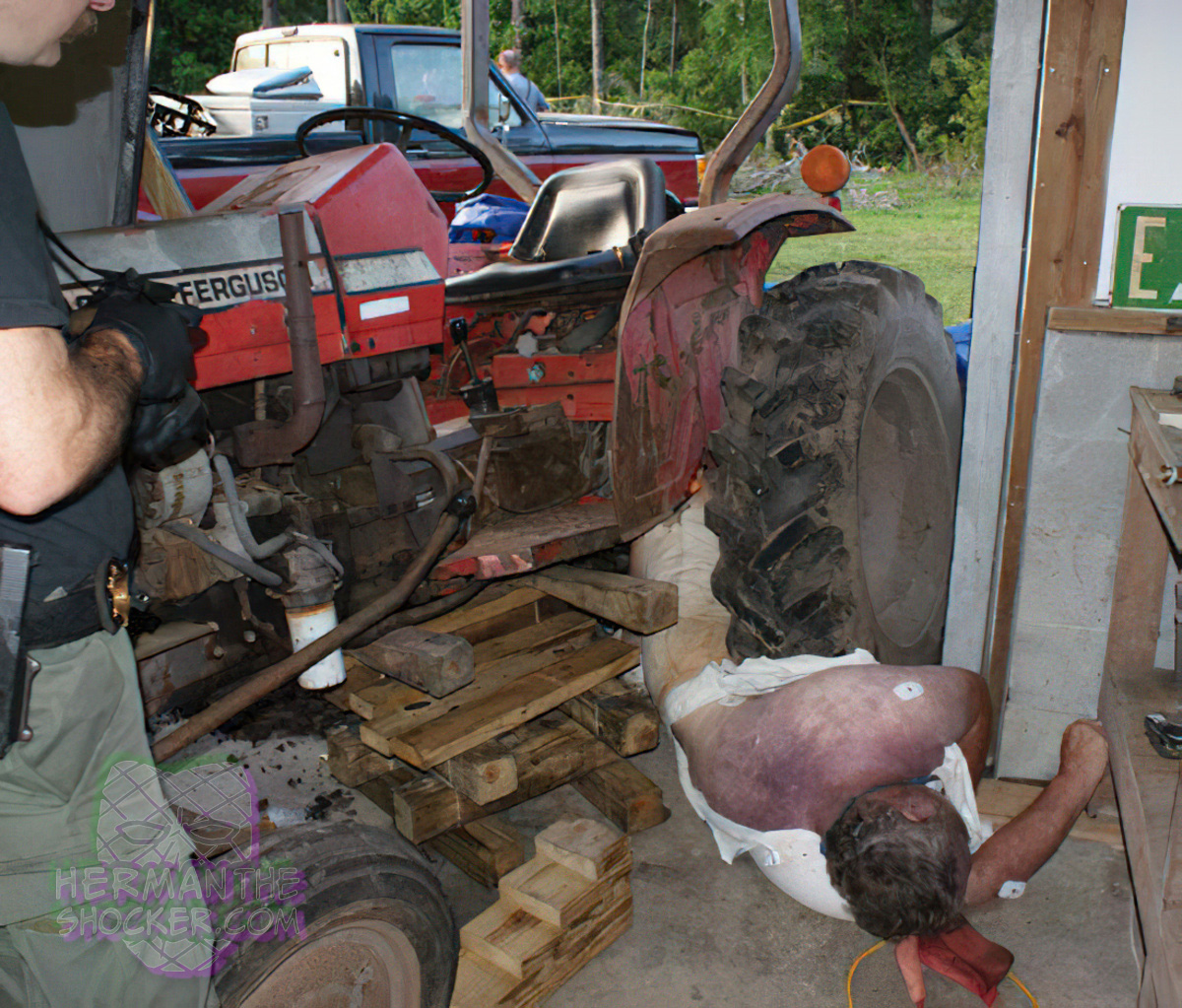The orientation of the decedent with the tire of the motor vehicle apparently compressing the midsection and with the corresponding vascular changes (congestion versus petechiae) support a scenario in which there was hampered venous return to the heart. As this would lead to impaired respiration, this is considered a form of mechanical asphyxia.
Latest posts

USA. A case of simple asphyxia combined with external airway obstruction by a plastic bag, in a suicidal…

This photo depicts a standard “execution type” drug hit. The victim’s hands were secured behind his back. A…

The individual shown in the image committed suicide by shotgun. The image is taken during autopsy. The head…





